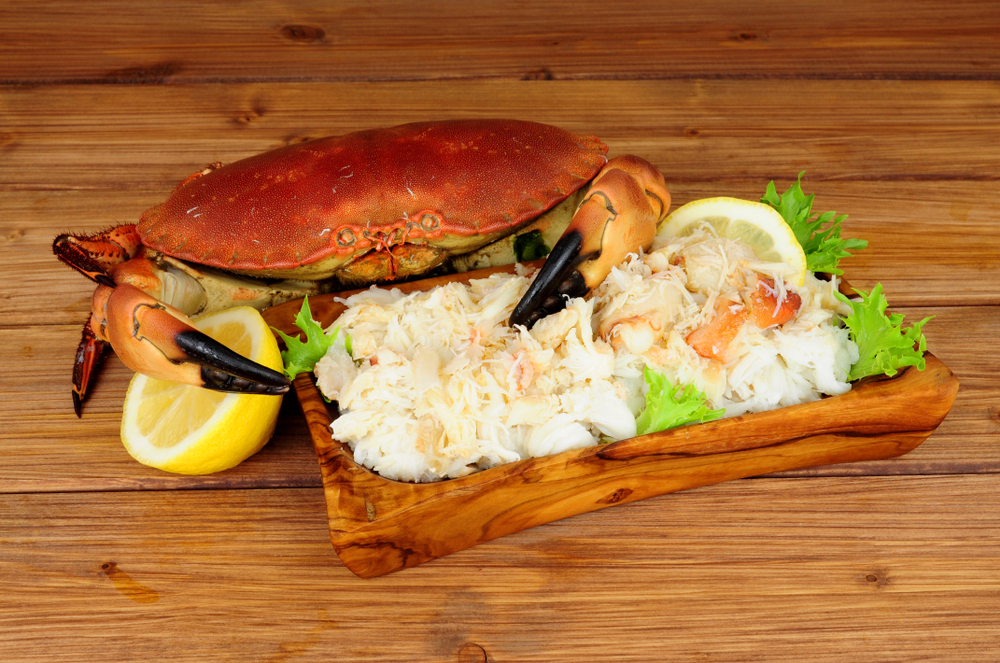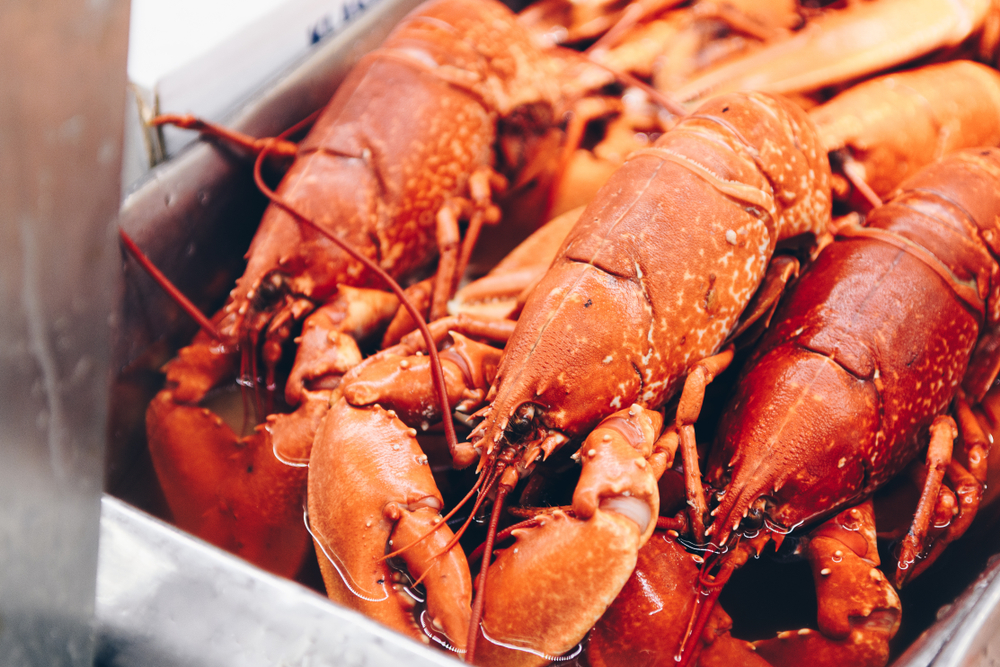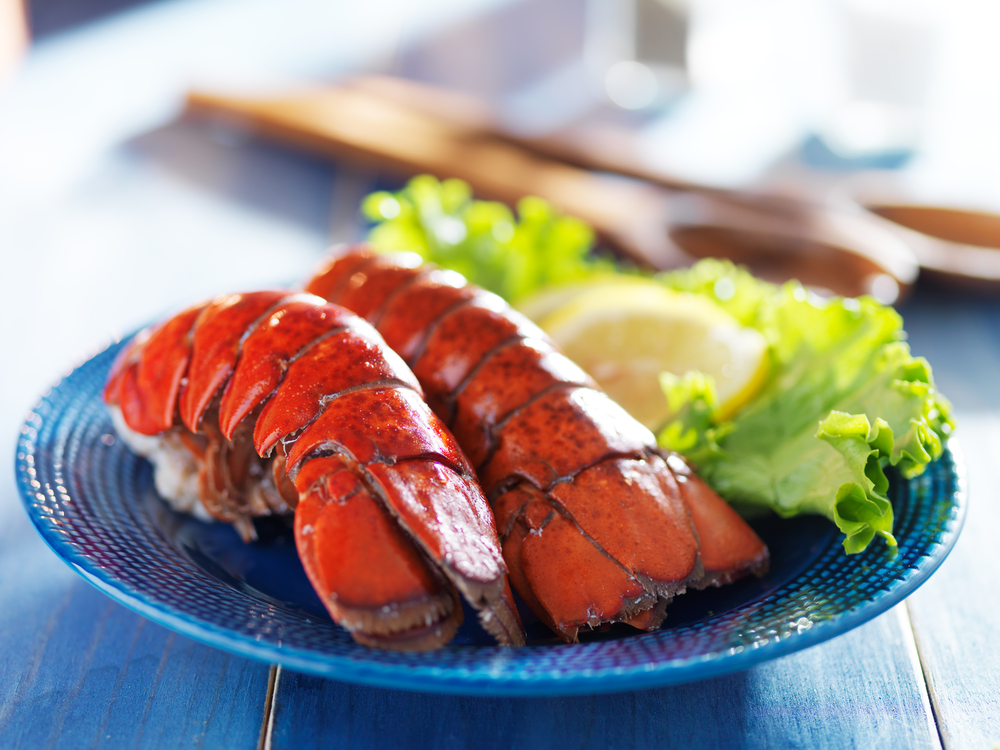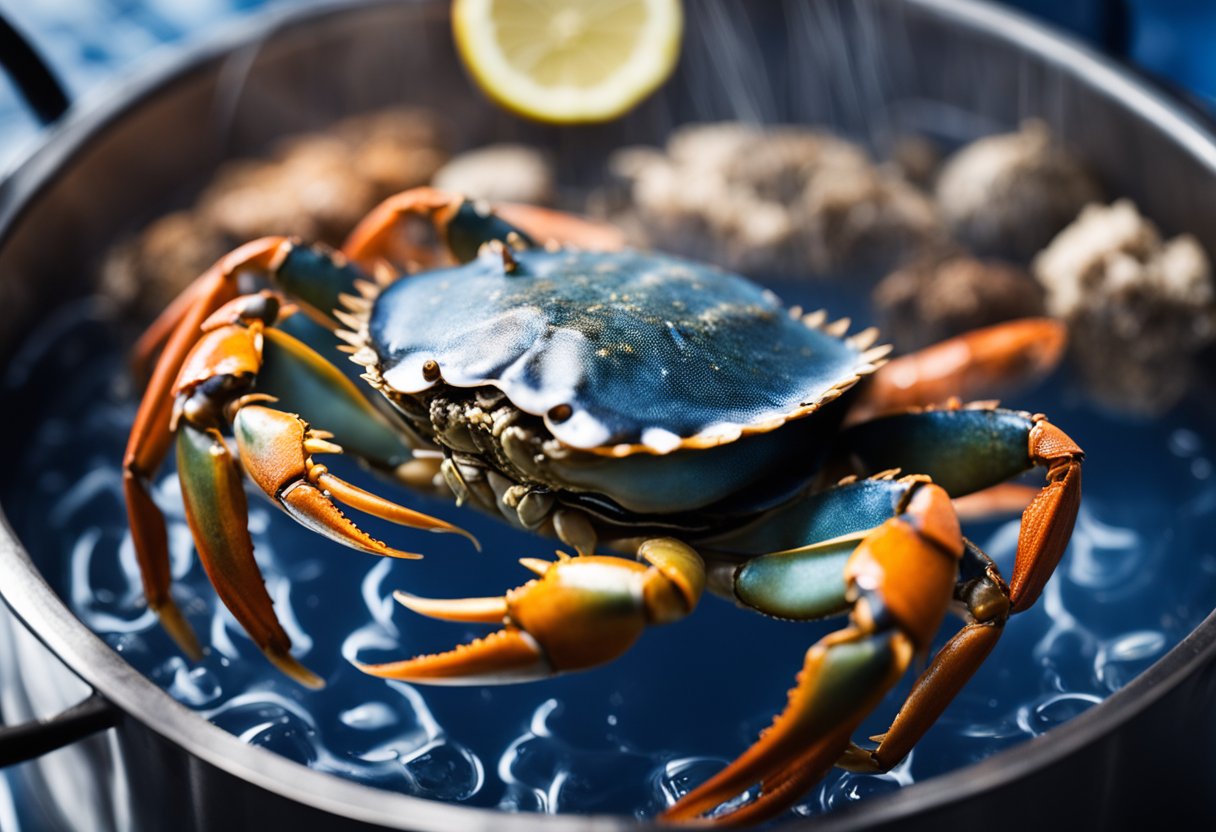I have always been curious about the taste of crab. As a seafood lover, I have tried many different kinds of seafood, but I have never had the chance to taste crab. So, what does crab taste like?
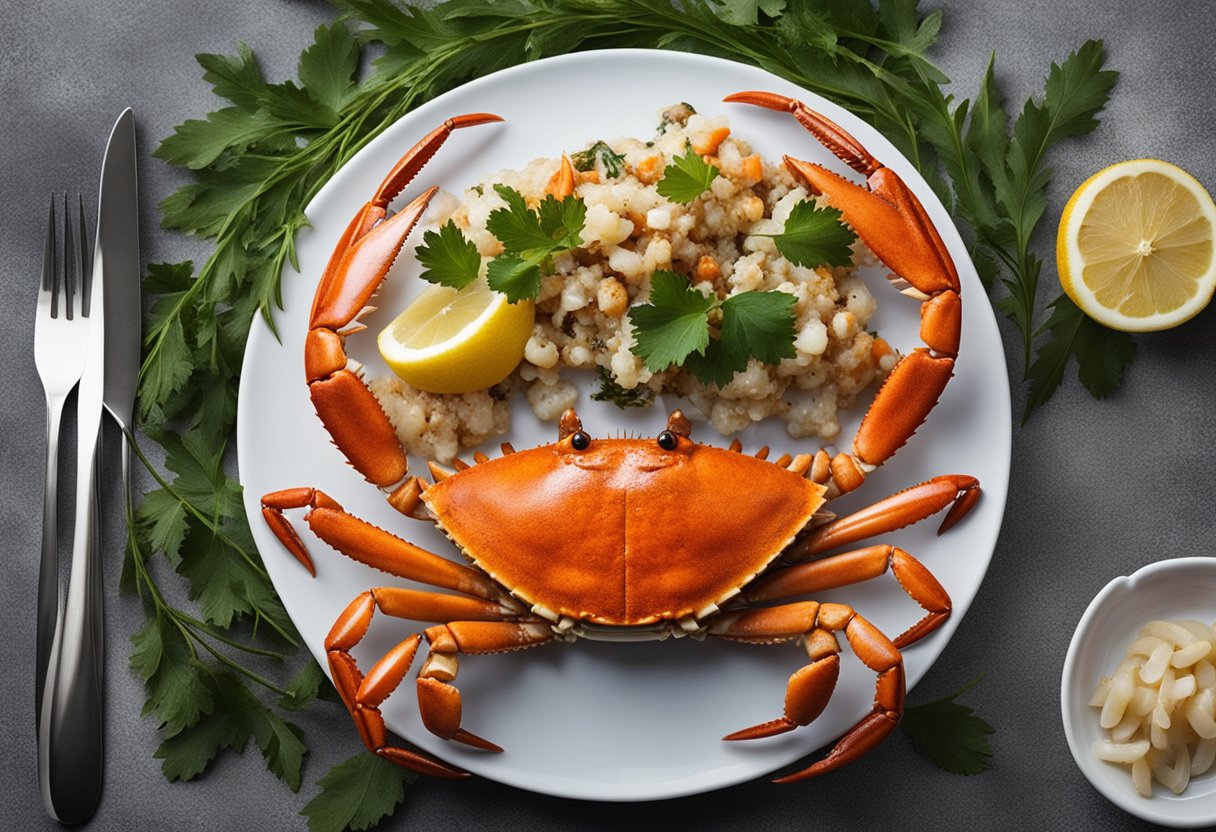
Crab meat has a unique taste that is a mixture of sweet and salty flavors. The taste can be described as a combination of shrimp and lobster, but with a hint of buttery and seafood taste on the side.
The taste and texture of crab can vary depending on the species and the way it is prepared. Some crabs have a light taste, while others have a stronger flavor.
Understanding Crab Taste
- Crab meat has a unique taste that is a mixture of sweet and salty flavors.
- The taste can be described as a combination of shrimp and lobster, but with a hint of buttery and seafood taste on the side.
- The taste and texture of crab can vary depending on the species and the way it is prepared.
Key Takeaways
- Crab meat has a unique taste that is a mixture of sweet and salty flavors.
- The taste and texture of crab can vary depending on the species and the way it is prepared.
- Crab meat is a healthy source of protein and other nutrients.
Understanding Crab Taste

As a seafood lover, I have tasted various types of seafood, but crab has a unique flavor and texture that sets it apart from other seafood.
Crab is a popular seafood that is enjoyed all around the world, and its taste varies depending on the species. In this section, I will explore the taste of crab and answer the question, “What does crab taste like?”
Crab has a delicate and sweet flavor that is often described as a combination of slightly sweet and salty. The taste of crab is subtle and not overpowering, and its texture is what sets it apart from other types of seafood.
Crab meat is tender, juicy, and has a slightly firm bite that almost melts in your mouth. The taste of crab is often compared to a cross between lobster and shrimp, making it a favorite among seafood lovers.
The flavor of crab varies depending on the species, and each species has its unique taste. For example, blue claw crab has a light taste that is very similar to shrimp, making it a popular choice for dishes such as scampi sauce, chowders, and bisques.
Snow white crab, on the other hand, has a sweet flavor that is slightly briny and is often found in Alaska or Maine.
In conclusion, the taste of crab is a delightful experience for seafood lovers. Its sweet and delicate flavor, combined with its tender and juicy texture, makes it a favorite among seafood enthusiasts.
Crab tastes like a cross between lobster and shrimp, and its taste varies depending on the species.
Different Types of Crab and Their Taste
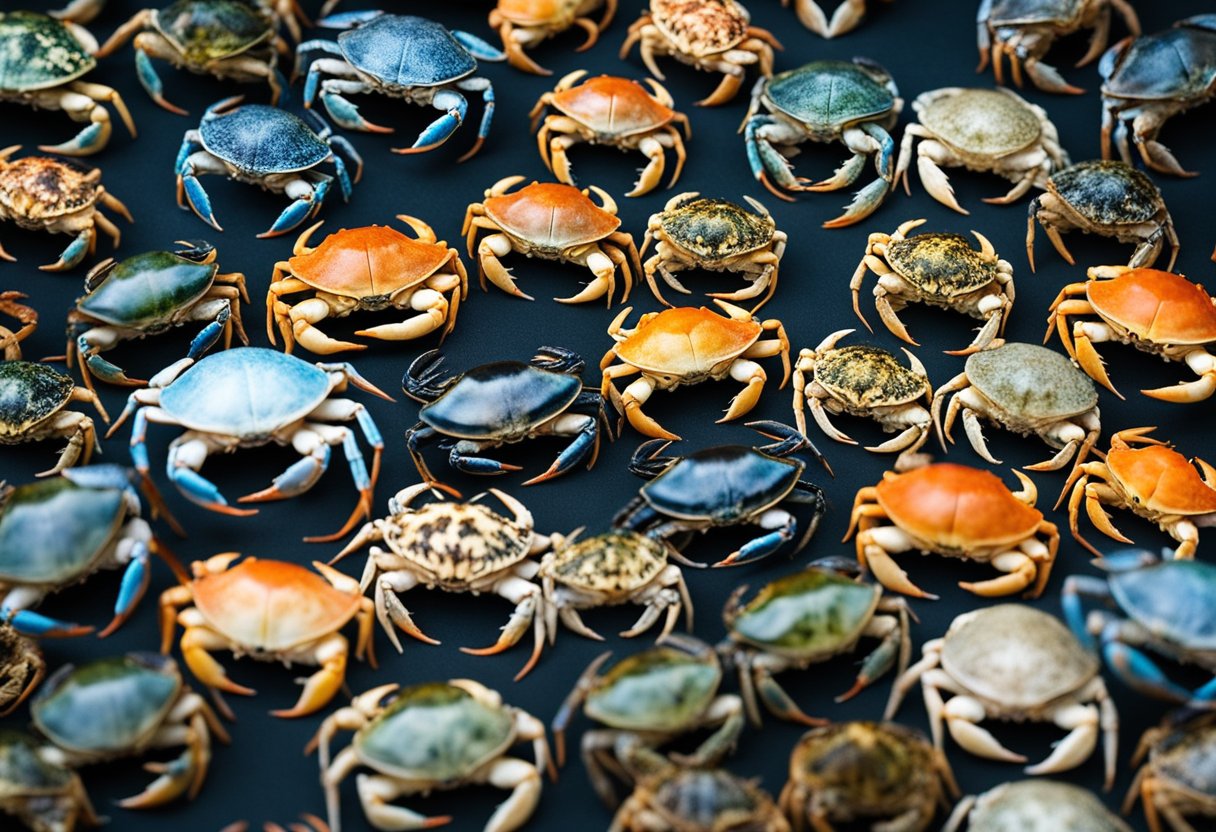
When it comes to different types of crab, there are a variety of options available, each with its own unique taste and texture. Here are some of the most popular types of crab and what they taste like.
Dungeness Crab
Dungeness crab is a popular type of crab that is found along the Pacific coast. It has a sweet and delicate flavor, with a slightly firm texture. Dungeness crab is often steamed or boiled and served with melted butter or a dipping sauce.
King Crab
King crab is a larger type of crab that is known for its sweet and succulent meat. It has a firm texture and a rich, buttery flavor. King crab is often served as legs or claws and is best when steamed or boiled.
Blue Crab
Blue crab is a type of crab that is found along the Atlantic coast and in the Gulf of Mexico. It has a sweet and slightly briny flavor, with a tender and flaky texture.
Blue crab is often steamed or boiled and served with Old Bay seasoning or a dipping sauce.
Snow Crab
Snow crab is a type of crab that is found in the northern regions of the Atlantic and Pacific oceans. It has a delicate and slightly sweet flavor, with a tender and flaky texture. Snow crab is often served as legs or claws and is best when steamed or boiled.
Stone Crab
Stone crab is a type of crab that is found along the Atlantic coast of the United States. It has a sweet and succulent flavor, with a slightly firm texture.
Stone crab is often served with mustard sauce or melted butter and is best when steamed or boiled.
Overall, each type of crab has its own unique taste and texture, making it a popular choice for seafood lovers.
Whether you prefer a sweet and delicate flavor or a rich and buttery texture, there is a type of crab out there that is sure to satisfy your taste buds.
Texture of Crab Meat
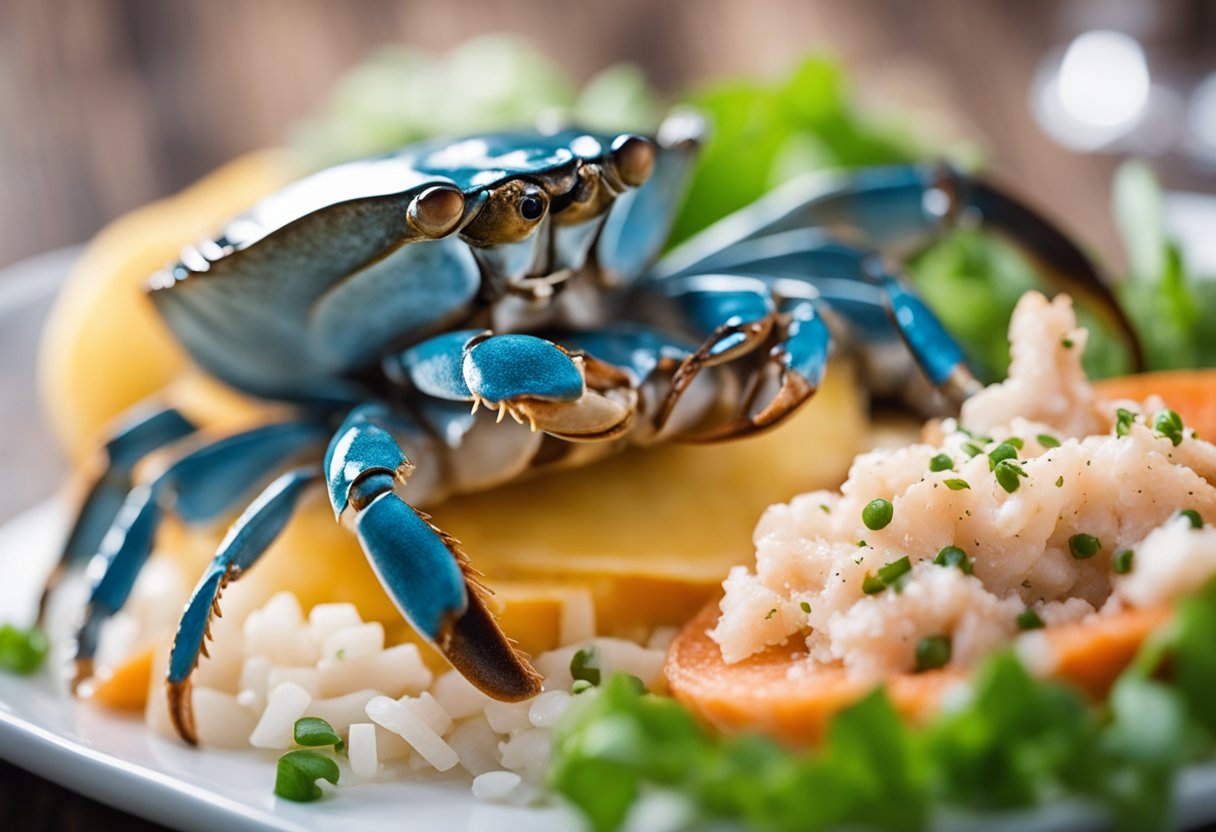
Crab meat has a unique texture that sets it apart from other types of meat. The texture of crab meat can vary depending on the species of crab, the part of the crab that the meat is taken from, and how it is prepared.
In general, crab meat is tender and firm, with a delicate texture that is both flaky and meaty. The texture of crab meat is often described as being similar to that of lobster, but with a slightly softer and more delicate texture.
The texture of crab meat can also vary depending on the color of the meat. White meat, which is taken from the claws and legs of the crab, is generally more tender and delicate than dark meat, which is taken from the body of the crab.
When preparing crab meat, it is important to handle it gently to avoid breaking up the delicate texture of the meat. Overcooking crab meat can also cause it to become tough and rubbery, so it is important to cook it just until it is tender and flaky.
Overall, the texture of crab meat is one of its most unique and appealing qualities. Its tender and delicate texture makes it a popular choice for a wide range of dishes, from crab cakes and crab bisque to sushi and seafood salads.
Crab Diet and Nutrition
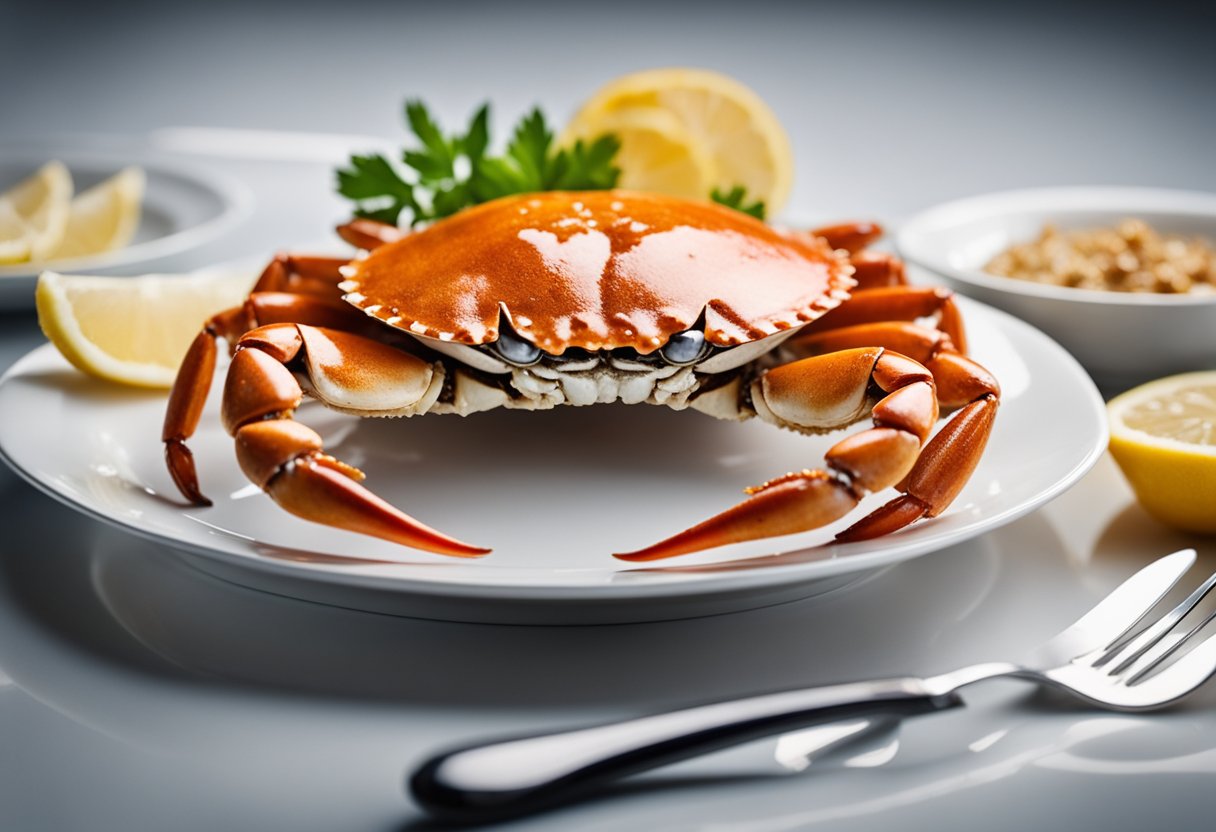
Crab meat is a delicious and healthy seafood that is rich in protein, vitamins, and minerals. It is low in fat and calories, making it an excellent addition to any balanced diet.
One of the primary benefits of crab meat is its high protein content. A 3-ounce serving of crab meat contains approximately 17 grams of protein, which is about 34% of the recommended daily intake for an average adult.
Protein is essential for building and repairing muscles, bones, and other tissues in the body.
Crab meat is also low in fat, with less than 1 gram of fat per 3-ounce serving. This makes it an ideal food for those who are watching their fat intake.
Additionally, crab meat is a good source of omega-3 fatty acids, which are essential for maintaining heart health and reducing inflammation in the body.
In terms of vitamins and minerals, crab meat is an excellent source of vitamin B12, which is essential for healthy nerve function and the production of red blood cells.
It also contains significant amounts of other vitamins, such as vitamin C, vitamin E, and vitamin A. These vitamins are important for maintaining healthy skin, eyesight, and immune system function.
Crab meat is also rich in minerals such as iron, zinc, and selenium. Iron is essential for healthy blood cells, while zinc and selenium are important for maintaining a healthy immune system and protecting against oxidative stress.
Overall, crab meat is a nutritious and delicious food that can be enjoyed in a variety of dishes.
Whether you are looking to increase your protein intake, boost your vitamin and mineral intake, or simply enjoy a tasty seafood meal, crab meat is an excellent choice.
Crab Cooking Methods and Flavor Influence
When it comes to cooking crab, there are several methods to choose from, each of which can influence the flavor of the final dish. Some of the most popular methods include grilling, boiling, and steaming.
Grilling crab is a great way to add a smoky flavor to the meat. To grill crab, simply brush the meat with butter or oil and place it on a hot grill.
Cook for a few minutes on each side until the meat is cooked through and slightly charred. Grilled crab can be served as a main dish or used in salads and other dishes.
Boiling is another popular method for cooking crab. This method is often used for larger crabs, such as Dungeness or king crab.
To boil crab, simply bring a large pot of salted water to a boil, add the crab, and cook for 10-15 minutes, depending on the size of the crab.
Boiled crab can be served with melted butter or used in dishes like crab cakes and chowders.
Steaming is a gentle cooking method that helps to preserve the delicate flavor and texture of the crab meat. To steam crab, simply place the crab in a steamer basket and steam for 8-10 minutes, until the meat is cooked through.
Steamed crab can be served with a variety of dipping sauces or used in dishes like crab legs and bisques.
No matter which cooking method you choose, the flavor of the crab can be influenced by the seasonings and other ingredients used in the dish.
For example, adding garlic and lemon to a butter sauce can enhance the natural sweetness of the crab meat, while adding Old Bay seasoning can give the dish a spicy kick.
Experimenting with different seasonings and ingredients can help you create a dish that perfectly complements the flavor of the crab.
Crab in Different Cuisines
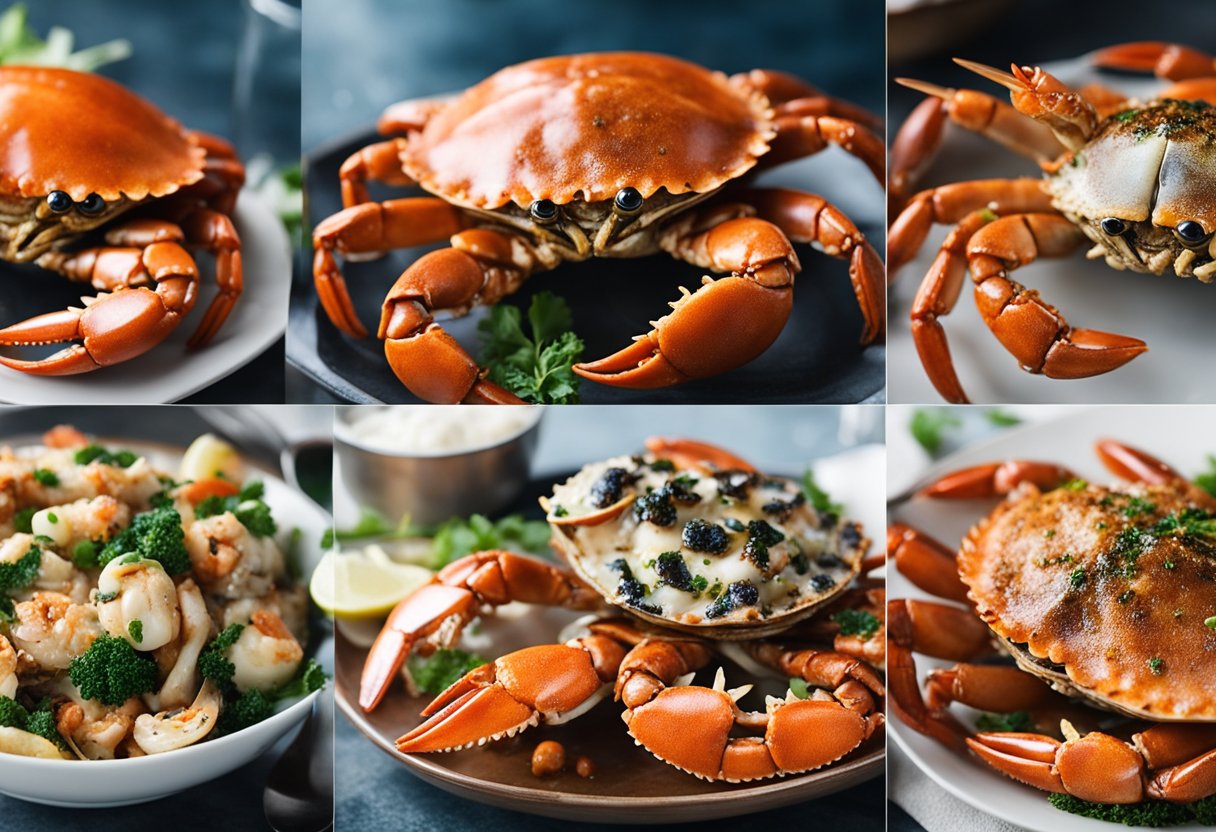
Crab is a popular seafood that is used in various cuisines around the world. From sushi to crab cakes, pasta to sandwiches, salads to soups, and stews, crab can be found in a wide range of dishes.
In Japanese cuisine, crab is a popular ingredient in sushi. The most common type of crab used in sushi is the snow crab, which has a sweet and delicate flavor.
The meat is often served raw or lightly cooked, and it pairs well with other sushi ingredients like avocado and cucumber.
Crab cakes are a popular dish in American cuisine. They are made by mixing crab meat with breadcrumbs, mayonnaise, and spices, and then frying or baking the mixture into patties.
Crab cakes can be served as an appetizer or a main course, and they are often served with a side of tartar sauce.
In Italian cuisine, crab is often used in pasta dishes. One popular dish is linguine with crab, which is made by sautéing garlic and red pepper flakes in olive oil, then adding crab meat and white wine to the pan.
The mixture is then tossed with cooked linguine and topped with fresh parsley and lemon juice.
Crab sandwiches are a popular lunchtime option in many countries. In the United States, crab meat is often used to make a crab salad sandwich.
The meat is mixed with mayonnaise, celery, and spices, and then served on bread with lettuce and tomato.
Crab is also a popular ingredient in salads. One popular salad is the crab Louis salad, which is made by combining crab meat with lettuce, hard-boiled eggs, tomatoes, and avocado.
The salad is then topped with a creamy dressing made from mayonnaise, ketchup, and Worcestershire sauce.
In soups and stews, crab is often used to add flavor and texture. One popular dish is crab bisque, which is a creamy soup made with crab meat, cream, and spices.
Another popular dish is crab chowder, which is a hearty soup made with potatoes, corn, and crab meat.
Overall, crab is a versatile ingredient that can be used in a wide range of dishes. Its sweet and delicate flavor makes it a popular choice in many different cuisines.
Imitation Crab vs Real Crab
As a seafood lover, I have often wondered about the difference between imitation crab and real crab. Imitation crab is a popular ingredient in many dishes, but how does it compare to the real thing?
Imitation crab, also known as surimi, is made from fish that has been deboned and minced into a paste. The paste is then mixed with other ingredients like starch, sugar, and crab flavoring to give it a taste and texture similar to real crab meat.
While imitation crab is a more affordable alternative to real crab, it does not have the same nutritional value. Real crab is significantly higher in nutritional value, as it contains omega-3 fatty acids and vitamins and minerals like B12, zinc, and selenium.
These nutrients tend to be washed away during the surimi processing of imitation crab.
In terms of taste, imitation crab is meant to taste like cooked fresh crab, in both texture and flavor.
However, real crab meat has a sweet and delicate flavor that is unique to its species, while imitation crab has a mild and slightly sweet taste that is similar to crab but not as rich.
Real crab meat is also more tender and has a firmer texture than imitation crab meat, which can be slightly rubbery.
When it comes to cooking with crab, it is important to note that real crab meat is more versatile and can be used in a wider range of dishes than imitation crab.
Imitation crab is often used in sushi rolls, salads, and crab cakes, but it may not hold up as well in more complex dishes.
Real crab meat, on the other hand, can be used in everything from soups and stews to pasta dishes and casseroles.
In conclusion, while imitation crab is a more affordable alternative to real crab, it does not have the same nutritional value or taste as real crab meat.
Real crab meat is more versatile and can be used in a wider range of dishes, making it a better choice for those who enjoy cooking with seafood.
Health Benefits of Eating Crab
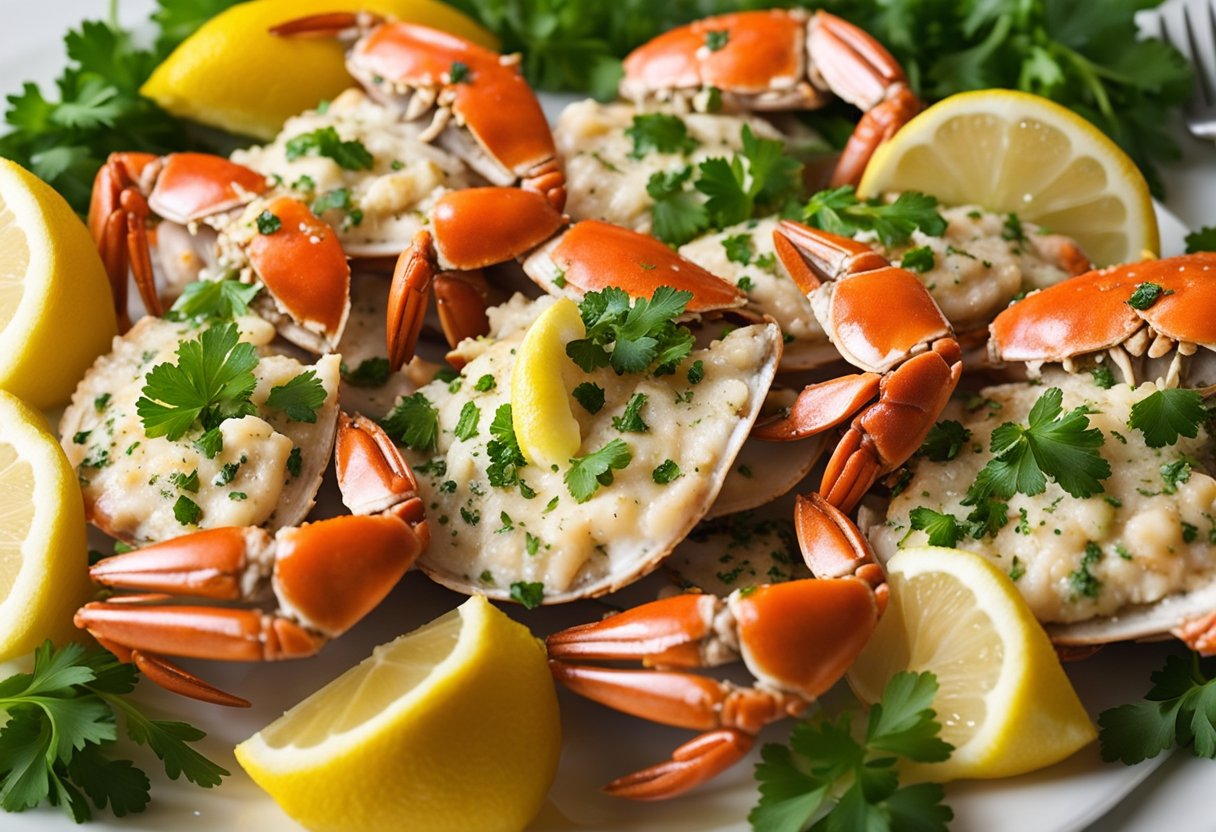
As a seafood lover, I am always on the lookout for new dishes to try.
Crab is one of my favorite seafood items, not just because of its delicious taste, but also because of its numerous health benefits. Here are some of the health benefits of eating crab:
Rich in Protein
Crab is a great source of protein, which is essential for building and repairing tissues in our body. A 100-gram serving of crab contains around 20 grams of protein.
This makes it an excellent food choice for people who are following a high-protein diet or trying to build muscle mass.
Heart Health
Crab is also good for the heart. It contains omega-3 fatty acids, which are known to reduce the risk of heart disease.
Omega-3 fatty acids can lower triglycerides, reduce inflammation, and improve blood circulation. Crab is also low in saturated fat, which is another factor that makes it good for the heart.
Low in Calories
If you are trying to lose weight, crab is a great food choice. It is low in calories and high in protein, which means it can keep you full for longer periods of time.
A 100-gram serving of crab contains only around 100 calories, making it a great food choice for people who are trying to maintain a healthy weight.
Rich in Vitamins and Minerals
Crab is also rich in vitamins and minerals that are essential for our body. It contains vitamin B12, which is important for nerve function and the production of red blood cells.
Crab also contains selenium, which is essential for the proper functioning of the thyroid gland. Additionally, crab is a good source of zinc, which is important for immune function and wound healing.
In conclusion, crab is not only delicious but also good for our health. It is rich in protein, heart-healthy omega-3 fatty acids, low in calories, and packed with essential vitamins and minerals.
So, the next time you are at a seafood restaurant, don’t hesitate to order a crab dish!
The Versatility of Crab in Cooking
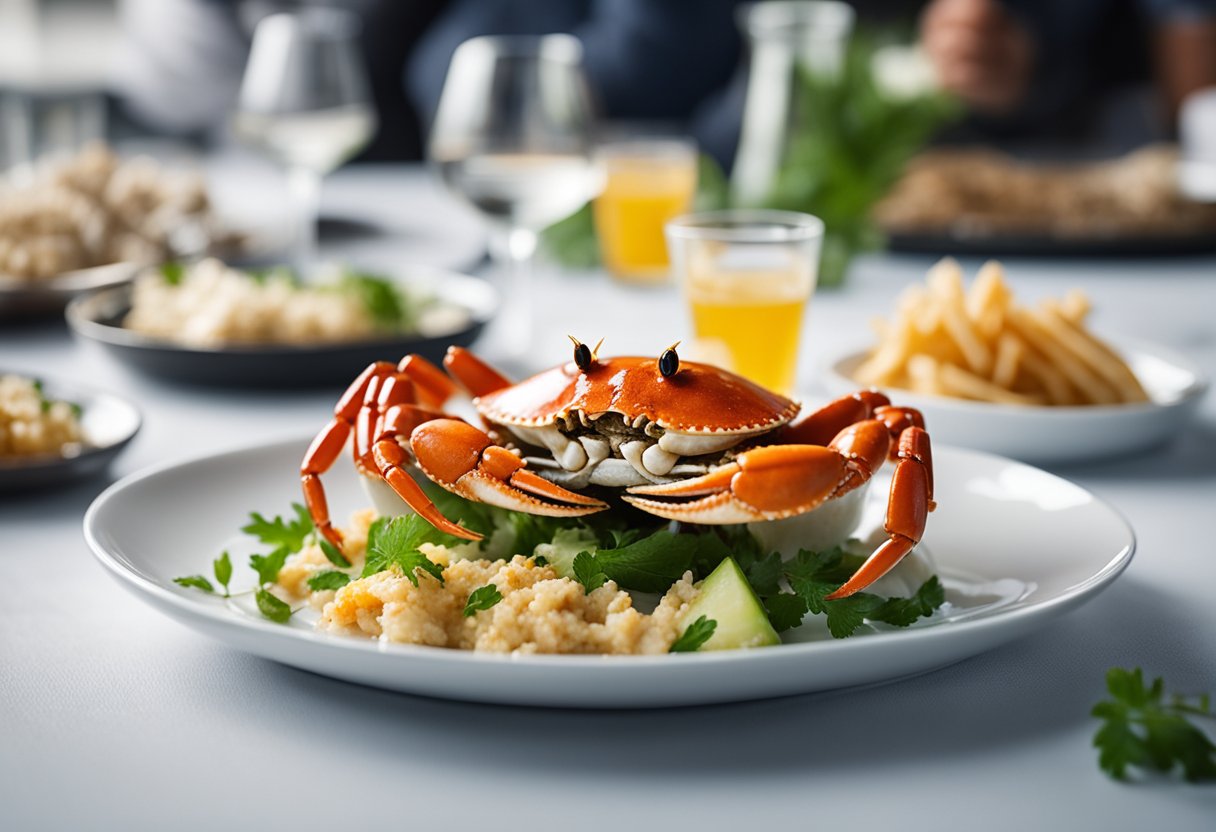
As a seafood lover, I find crab to be one of the most versatile ingredients in the kitchen. It’s a delicious addition to many dishes, and its unique flavor pairs well with a variety of seasonings and flavor profiles.
One of the great things about crab is that it can be used in both hot and cold dishes. For example, crab cakes are a classic hot dish that can be served as an appetizer or main course.
On the other hand, crab salad is a refreshing cold dish that’s perfect for a light lunch or dinner.
When it comes to seasonings, crab can be infused with a wide range of flavors. For a classic taste, Old Bay seasoning is a popular choice.
Other seasonings that pair well with crab include garlic, lemon, and thyme. These seasonings bring out the natural sweetness of the crab meat and enhance its flavor.
Crab also pairs well with a variety of flavor profiles. For example, Asian-inspired dishes often use crab meat as a protein source. The sweetness of the crab meat complements the spicy and savory flavors of dishes like crab Rangoon or crab stir-fry.
In Italian cuisine, crab can be used in pasta dishes like linguine with crab and tomato sauce. The sweetness of the crab meat pairs well with the acidity of the tomato sauce.
In conclusion, crab is a versatile ingredient that can be used in a variety of dishes. Its unique flavor and ability to pair well with different seasonings and flavor profiles make it a great addition to any kitchen.
Frequently Asked Questions
Is crab meat tasty?
Yes, crab meat is considered to be one of the tastiest seafood options available. It has a sweet flavor profile with a slightly salty and fishy taste. The texture of crab meat is also very tender and juicy, making it a popular choice for many seafood dishes.
What is the flavor profile of king crab?
King crab has a unique flavor profile that is both sweet and briny. It has a tender texture and a subtle taste that is often compared to lobster. King crab is commonly used in dishes such as crab legs, crab cakes, and crab bisque.
What makes crab taste sweet?
Crab meat has a natural sweetness that comes from its high protein content. The natural sugars in the crab’s body are released during cooking, giving it a sweet flavor.
The sweetness of crab meat is enhanced by the addition of butter, garlic, and other seasonings.
What is the taste of crab legs?
Crab legs have a delicate, sweet flavor that is slightly briny. They are often compared to the taste of lobster and shrimp. The texture of crab legs is also unique, with a tender and juicy meat that is easy to pull apart.
What is the taste of shrimp compared to crab?
Shrimp has a mild and slightly sweet taste that is often compared to crab. However, the taste of shrimp is not as strong as crab, and it has a more delicate texture. Shrimp is often used in dishes such as scampi sauce, chowders, and bisques.
Do lobster and crab have similar taste profiles?
Lobster and crab have similar taste profiles, with both having a sweet and briny taste. However, lobster has a more pronounced flavor and a firmer texture than crab. Lobster is often considered to be a more luxurious seafood option than crab due to its higher price point.



